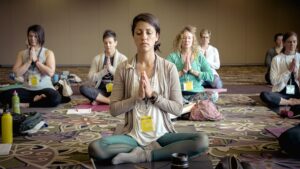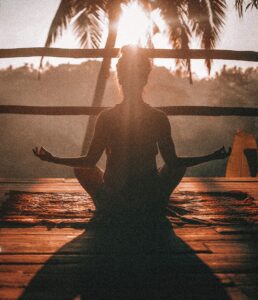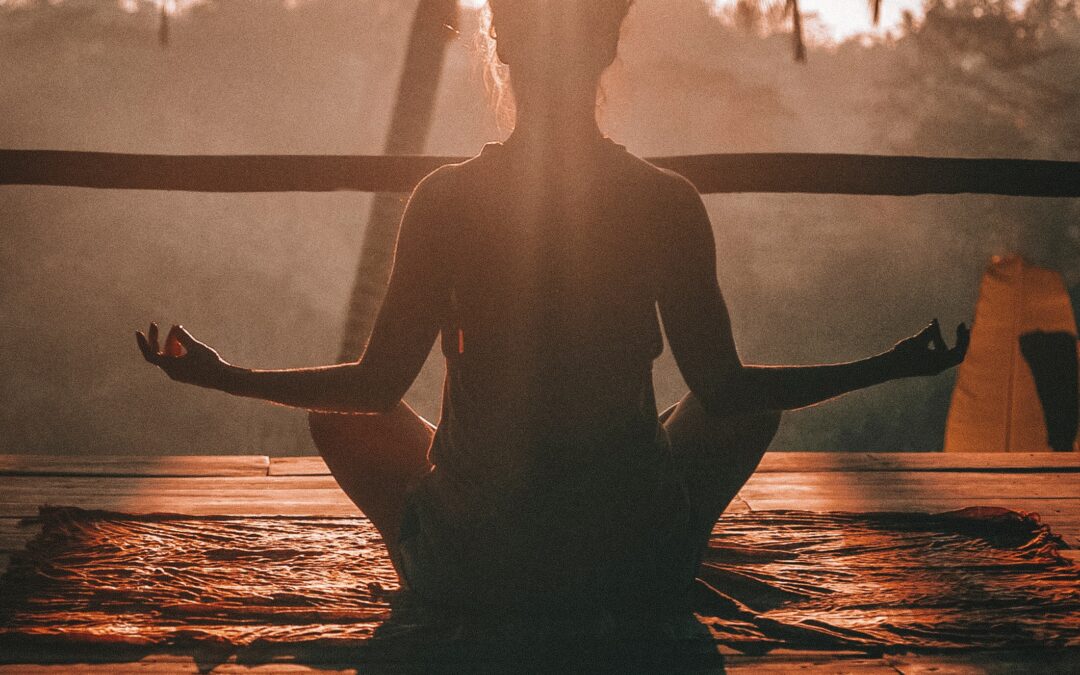In order to enhance general well-being and reduce stress, yoga is a holistic practice that includes physical postures, breathing exercises, meditation, and mindfulness practices of stress relief and relaxation. It is well known for its ability to lower tension and encourage relaxation because of the following factors.
Stress relief and relaxation Physical Relaxation
Reduces tension and tightness in the muscles and the body. It is a state in which the physical body feels at ease and comfortable muscles are less constricted. It is possible to attain physical relaxation through a variety of methods and exercises with Yoga Asanas (Postures) which particular yoga postures made to stretch and relieve tension in various muscle groups. This position encourages flexibility improvement while reducing muscle tightness with elasticity of mucles and joints that create way of relaxation.
Stress relief and relaxation Progressive Muscle Relaxation
This method entails gradually tensing and relaxing various bodily muscle groups. People who practice determined muscle release become more conscious of their muscles.
Exercising the breath: Deep breathing techniques, such as diaphragmatic breathing or yoga’s pranayama, relax the muscles and encourage physical calm. The parasympathetic nerve system of the body, linked to relaxation, is activated when one takes deep breaths.
Massage and bodywork: By exerting pressure and kneading muscles, professional massage and bodywork techniques like Swedish massage or shiatsu can reduce muscle tension and encourage physical relaxation.
To relax and relieve tension, deep breathing is the deliberate practice of taking long, calm breaths. When you practice deep breathing, you effectively take charge of your breathing making it slower than your regular shallow breathing patterns. Here is an explanation of what this means:
Conscious and Controlled Breathing: This entails consciousness of breathing and actively controlling it. You purposefully regulate each breath’s depth and pace rather than breathing voluntarily and involuntarily.
Yoga refers to numerous breath control techniques such as pranayama. To accomplish various results, such as relaxation and mental clarity, these techniques use precise patterns of inhaling, holding, and exhaling air. Engaging in breathing, through practices like pranayama, basically signals your body to change from a state of increased awareness (the “fight or flight” reaction”) to a state of peace and relaxation. The parasympathetic nervous system, which is in charge of encouraging rest and recovery, mediates this change. Stress relief and relaxation is wealth.
Stress relief and relaxation Mind-Body Connection
Strong mind-body connections can be developed through yoga. By concentrating their attention on their breath and physical actions, practitioners develop the ability to be fully present at all times. By assisting people in letting go of concerns about the past or the future, mindfulness helps people experience less mental stress. When you practice deep breathing, you effectively take charge to make it slower than your regular shallow breathing patterns. Stress relief and relaxation is wealth.
stress relief and relaxation: Conscious and Controlled Breathing

stress relief and relaxation
This requires consciousness of breathing and actively controlling it. You intentionally regulate each breath’s depth and pace rather than breathing voluntarily and involuntarily.Being in the moment is similar to pausing life’s steady onward motion. You concentrate on the present moment rather than obsessing over what occurred yesterday or what might occur tomorrow. Entail enjoying each moment as it develops.
Stress hormone regulation
Regular yoga practice has been shown to lessen cortisol and adrenaline levels, two stress chemicals. This hormonal control helps the body maintain balance by reducing the physiological effects of stress. Think of the body’s alert system as being the stress hormones cortisol and adrenaline. When you’re under stress or navigating a challenging scenario, they become active.
It almost feels like your body is asking you to pay attention. Stress relief and relaxation is wealth.Equilibrium Maintenance: Your body maintains balance just like a sensible melody in a song. It’s the perfect amount of stress and relaxation. You need to be in this balanced state if you want to be healthy.
Stress relief and relaxation Physiological Effects of Stress Reduction
Controlling your stress hormones is like stopping a storm from becoming a hurricane. Stress is still present from time to time but it doesn’t turn into a complete hurricane. Your muscles are still calm, your heart rate doesn’t change, and your mind doesn’t work too hard.
Stress relief and relaxation: Improved Sleep
In plain English, getting better sleep with the use of yoga is like discovering the key to a long, deep sleep key that opens a world of comfort. Here’s how it operates:
Sleep Issues: Picture those evenings when getting any sleep seems like hunting fireflies in the dark. Stress usually makes it tough to unwind and go off to sleep. Thoughts and anxieties flit about like annoying insects.

stress relief and relaxation
Think of yoga as your calming bedtime lullaby. Yoga is like covering yourself in a warm, familiar blanket. Your night routine includes gentle stretches and deep breaths.Yoga can assist in quieting the mind in a similar way to how a soft breeze might settle a tree’s agitated leaves. As you concentrate on your breathing and relaxing motions, your problems from the day start to slowly escape. It is similar to lowering the volume of your chaotic thoughts.
Imagine your body as a taut rubber band that is gently unwinding to help you relax. Yoga asanas and stretches relieve the physical tension accumulated throughout the day. Your body becomes more like a cozy bed luring you to sleep as your muscles relax.
The Sleep-Relaxation Loop: Yoga is like a positive feedback loop that improves the quality of your sleep. Stress reduction leads to improved sleep.
It’s important to remember that different people may respond differently to yoga’s ability to reduce stress. What is effective for one person might not be as effective for another. Additionally, to get the full rewards of yoga for stress alleviation, consistency in practice is essential. Yoga’s capacity to encourage relaxation and lessen stress can be further increased by combining it with other stress-management techniques including a healthy lifestyle and social support.

Recent Comments